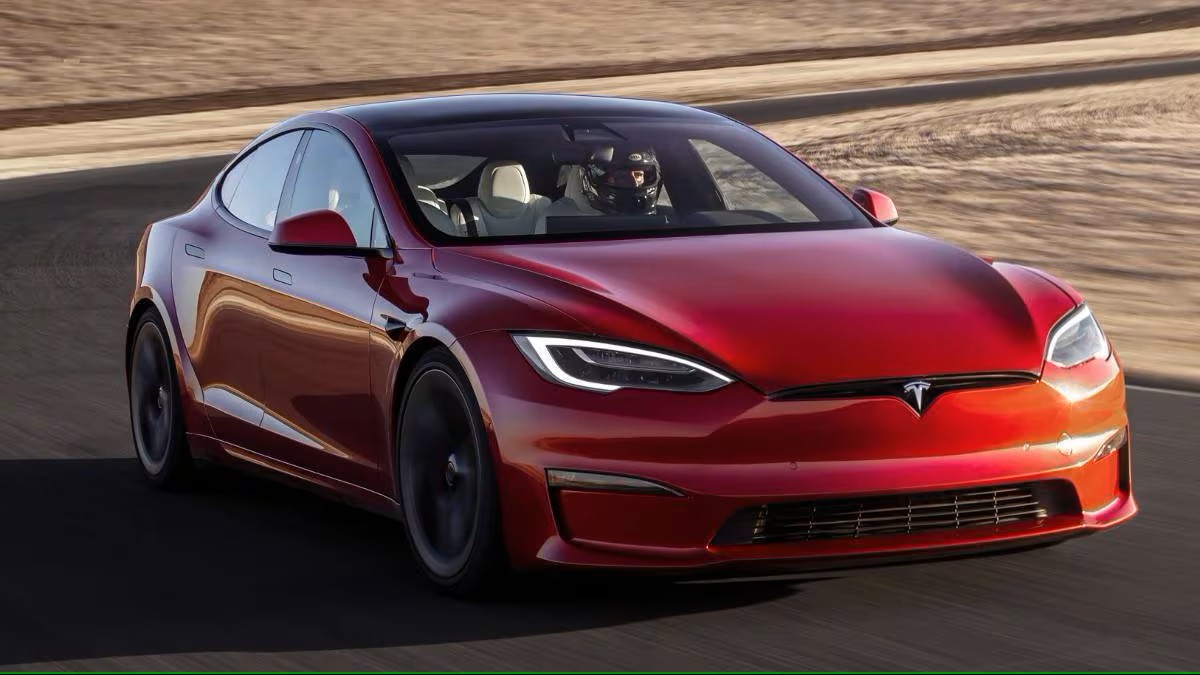Speed has long been a defining trait in the world of sedans. Whether it’s the thrill of pushing past 150 mph on a closed track or the quiet confidence of having a machine that’s been engineered for maximum performance, top speed remains a coveted figure.
Some sedans exist purely to shatter benchmarks and flirt with supercar territory, combining family-friendly design with astonishing velocity.
These are machines where engineers prioritize speed without compromise, resulting in elite-tier sedans that rival or outperform many coupes and sports cars.
But the other side of the spectrum tells a different story. Due to safety concerns, regulatory mandates, tire limitations, or brand philosophy, many sedans are deliberately equipped with speed governors.
These electronic limiters cap the top speed—sometimes drastically below the vehicle’s true potential. While these sedans may possess capable engines, manufacturers limit their full expression for various reasons.
This duality—between the fastest sedans and those intentionally slowed—offers a fascinating glimpse into the engineering priorities and philosophical differences within the auto industry.
In this feature, we’ll examine five sedans that boast some of the highest top speeds ever recorded and contrast them with five that are electronically reined in. This comparison reveals how performance and restraint coexist in today’s automotive landscape.
Also Read: 5 Chevys That Survive 400,000 Miles and 5 That Don’t See 100K
5 Sedans With Highest Top Speeds
The idea of a sedan breaking the 200-mph barrier once seemed absurd. Yet, in today’s high-performance world, sedans are no longer just practical, four-door family cars.
Automakers have merged sports car engineering with daily usability, producing sedans capable of astonishing speeds—without sacrificing comfort, safety, or luxury.
These super-sedans are typically born from performance divisions like BMW M, Mercedes-AMG, Audi Sport, or niche marques like Tesla’s Plaid and Dodge’s Hellcat-powered beasts.
What makes a sedan capable of such speeds? It’s not just raw horsepower—though these cars often top 600 or even 1,000 hp. It’s about aerodynamics, chassis balance, sophisticated suspension, and advanced electronic control systems.
Unlike their two-door sports siblings, these sedans provide luxury appointments and space while still challenging track records.
This list of the five fastest sedans on the market today is more than a bragging rights showdown.
It’s a look into how automakers push the envelope, combining top-tier engineering, advanced materials, and years of racing knowledge to create machines that defy the traditional limits of the sedan segment.
Whether it’s all-electric torque from Tesla or the thunderous roar of a V8 from Dodge, each sedan here is an engineering marvel.
Let’s explore the five fastest sedans you can buy, each with a top speed that defies expectations—and each representing the pinnacle of what a four-door can truly do when speed is the mission.
1. Dodge Charger SRT Hellcat Redeye Widebody – 203 mph
The Dodge Charger SRT Hellcat Redeye Widebody is a modern American icon that throws subtlety out the window.
It’s the fastest production sedan from a U.S. automaker, and with a top speed of 203 mph, it stands toe-to-toe with high-end European competitors that cost twice as much.
At the heart of this beast is a supercharged 6.2-liter HEMI V8 engine, producing a jaw-dropping 797 horsepower and 707 lb-ft of torque.
This engine is borrowed from the Demon and tweaked for daily driving—though calling this sedan “tame” in any sense would be laughable.
The Widebody design isn’t just for aesthetics. Those flared fenders accommodate wider 305-section tires on all four corners, providing crucial grip when the rear tires are fighting to contain nearly 800 horses.
The suspension is retuned, the cooling system is beefed up, and the brakes are massive—everything about the Redeye is engineered to control its ridiculous power.
Dodge includes performance pages on the infotainment system, showing you real-time data like G-forces, lap timers, and engine output.
But what truly sets it apart is how raw and visceral it feels, especially when most modern performance sedans lean toward refinement. The Redeye snarls on start-up, growls at idle, and screams toward redline like it’s possessed.
Despite its extreme nature, the Charger Redeye doesn’t skip on comfort. It still offers a spacious cabin, an intuitive Uconnect infotainment system, and seating for five.
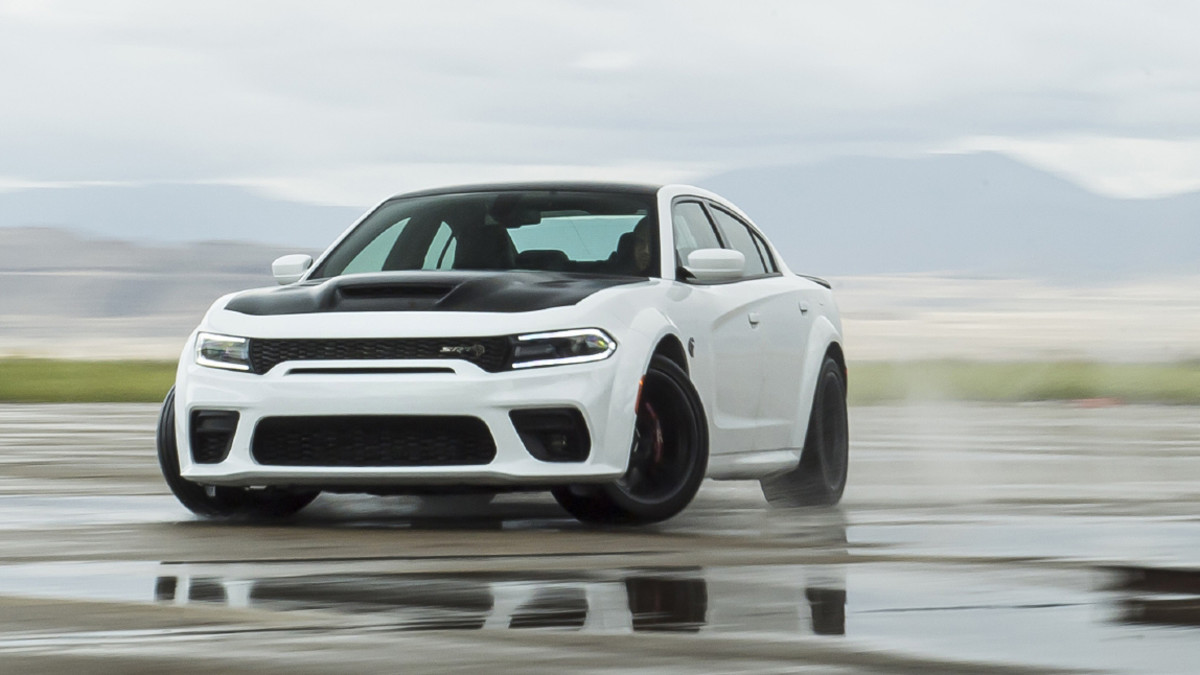
It’s one of the few cars on this list where you can carry passengers, groceries, and absolutely demolish a quarter-mile in under 11 seconds—all in the same afternoon.
This car is significant not just for its speed, but for what it represents. In a world moving rapidly toward electrification and quiet performance, the Hellcat Redeye is the last of a dying breed—an unapologetically loud, tire-smoking, V8-powered monster that happens to have four doors.
For enthusiasts who want outrageous top speed, intimidating design, and old-school muscle wrapped in a modern body, the Charger SRT Hellcat Redeye delivers in brutal fashion. It’s a modern muscle sedan that doubles as a record-setter and future classic.
2. Tesla Model S Plaid – 200 mph
The Tesla Model S Plaid redefined what an electric sedan could be—and not just in terms of eco-friendliness or acceleration, but outright top speed.
With a verified top speed of 200 mph (when fitted with proper wheels and tires and the track mode enabled), the Plaid proves that blistering speed isn’t exclusive to gasoline-powered machines. It’s one of the fastest sedans in the world—electric or otherwise.
The heart of the Plaid is its tri-motor all-wheel-drive system, which delivers a mind-warping 1,020 horsepower and 1,050 lb-ft of torque.
This setup allows the car to launch from 0 to 60 mph in under 2 seconds, making it faster than most hypercars—while still offering room for five and a hatchback trunk.
But beyond straight-line madness, the Plaid’s engineering makes it shockingly stable at high speeds. Aerodynamic refinement, battery weight placement for a low center of gravity, and continuously adaptive suspension all contribute to a sense of poise that rivals European luxury sedans.
Tesla’s “Track Mode” unlocks the car’s full potential, adjusting torque vectoring, cooling systems, and stability control to let drivers tap into all 200 mph of top-end performance.
And while achieving those speeds requires ideal conditions (and the right equipment), it’s the fact that a fully electric luxury sedan can do it that really matters. It shatters the myth that EVs are only for quiet, short-range city commuting.
Inside, the Model S Plaid remains quintessentially Tesla. The yoke steering wheel may divide opinions, but it adds to the car’s futuristic vibe.
A massive center screen controls nearly every function, from climate control to track telemetry. Passengers enjoy premium materials, minimalist design, and an impressive amount of space—especially in the rear seats.
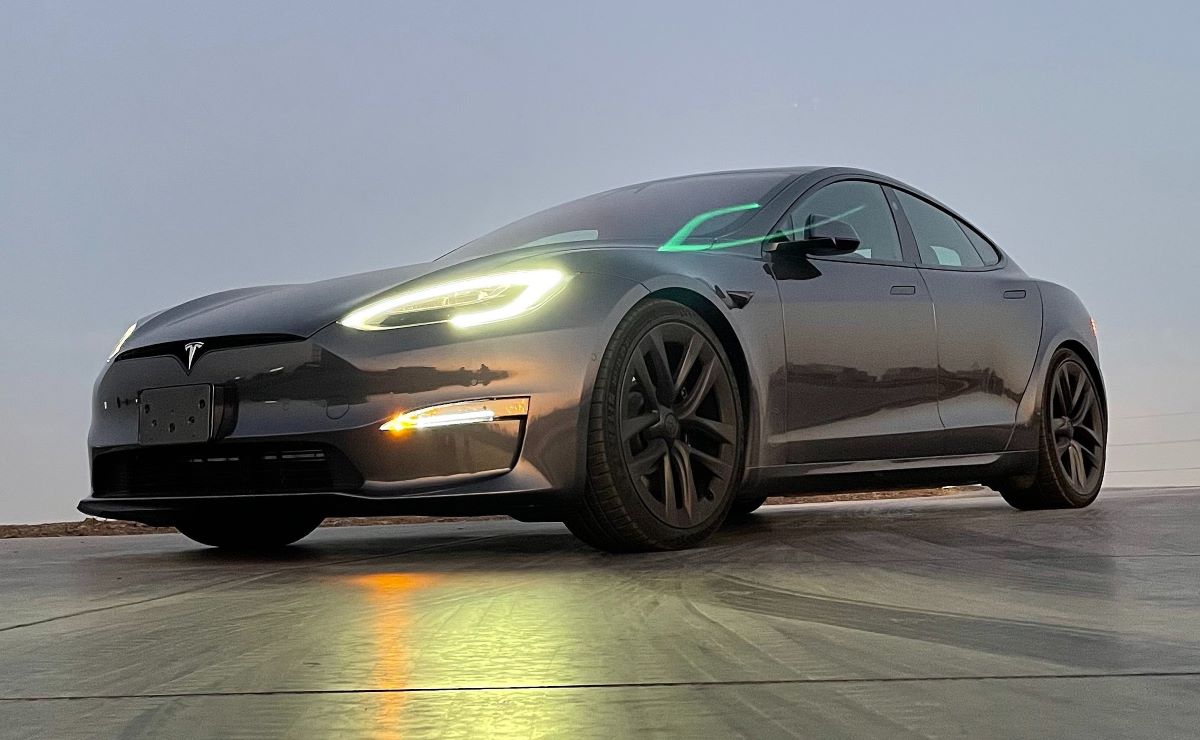
More importantly, this sedan is usable every day. With a range of over 350 miles and access to Tesla’s Supercharger network, long-distance driving is stress-free. And because there’s no engine to maintain, the ownership experience is remarkably simple.
The Plaid isn’t just about hitting 200 mph—it’s a milestone in performance history. It demonstrates that EVs can surpass combustion engines not just in efficiency, but also in raw, thrilling speed.
For drivers who want the future of performance today, the Model S Plaid is the ultimate proof that electric doesn’t mean compromise—it means dominance.
3. BMW M5 CS – 190 mph
The BMW M5 CS isn’t just another fast sedan—it’s the most extreme and track-focused 5 Series ever built. With a top speed of 190 mph and a 0–60 time of just 2.9 seconds, the M5 CS combines raw power with fine-tuned precision in a way that few four-door cars ever have.
This car is the crown jewel of BMW’s M division—a limited-edition masterpiece that pushes the already formidable M5 platform to its limits.
Under the hood, the M5 CS houses a 4.4-liter twin-turbocharged V8 that produces 627 horsepower and 553 lb-ft of torque. While the regular M5 Competition is no slouch, the CS is lighter, faster, and more aggressive.
A 230-pound weight reduction is achieved through the use of carbon fiber reinforced plastic (CFRP) components, including the roof, hood, front splitter, and rear diffuser. Even the front bucket seats are carbon shells, further emphasizing the car’s racing DNA.
But this sedan isn’t just about brute speed. The M5 CS features a revised suspension setup with stiffer springs and retuned dampers.
The xDrive all-wheel-drive system has been recalibrated for sharper handling, and drivers can even switch to rear-wheel drive for more spirited track sessions. Massive carbon-ceramic brakes come standard, ensuring it can stop just as well as it accelerates.
On the outside, the M5 CS sports unique touches like gold bronze accents on the kidney grilles and wheels, yellow DRL headlights inspired by GT race cars, and exclusive Frozen Deep Green Metallic paint. Inside, it’s just as special.
The cabin features four deeply bolstered sport seats—yes, even the rear passengers get their own carbon-fiber bucket seats. Alcantara upholstery, CS badging, and a sport steering wheel further reinforce the car’s singular identity.
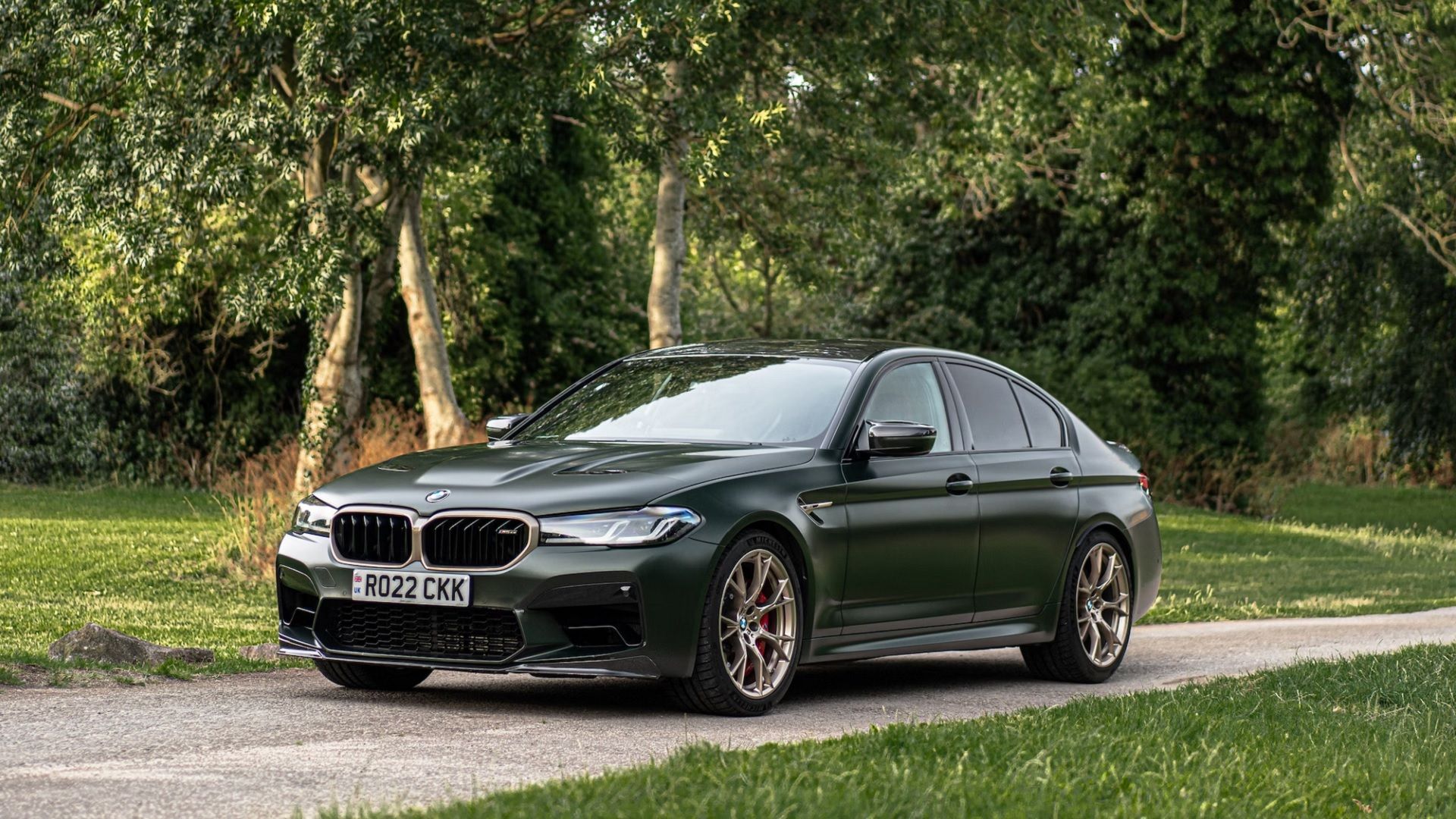
Why does this car matter in a list of top-speed sedans? Because it strikes a rare balance. It’s not just about raw numbers—though it delivers those in spades—but about achieving speed with precision, poise, and a motorsport ethos.
It feels like a race car with license plates, yet it doesn’t sacrifice the creature comforts expected from a $140,000 luxury sedan.
The BMW M5 CS is a rare combination of engineering, performance, and exclusivity. It’s one of the most complete, well-rounded fast sedans ever made—and a future classic in the making.
4. Audi RS7 Performance – 190 mph (With Limiter Removed)
The Audi RS7 Performance is one of those rare vehicles that manages to be brutally fast while still appearing elegantly understated.
With the factory-installed limiter removed, the RS7 Performance can reach up to 190 mph, placing it squarely among the top echelon of super sedans. But the RS7 isn’t just about hitting high numbers on a speedometer—it’s about how easily and confidently it gets there.
Under its sleek, fastback body lies a 4.0-liter twin-turbocharged V8 that cranks out 621 horsepower and 627 lb-ft of torque. That’s a substantial bump over the standard RS7, and it allows this hefty five-door liftback to sprint from 0 to 60 mph in just 3.3 seconds.
The power is routed through an 8-speed automatic transmission and Audi’s legendary quattro all-wheel-drive system, ensuring every ounce of power is transferred to the ground with stability and precision—even under harsh conditions.
The RS7 Performance isn’t just a straight-line missile. Its adaptive air suspension, dynamic ride control, and optional rear-wheel steering make it surprisingly agile for a car that weighs over 4,500 pounds.
It feels nimble in corners, solid on highways, and perfectly composed at high speeds—traits that elevate it beyond just being a fast luxury car.
Visually, the RS7 Performance gets subtle upgrades like larger air intakes, unique 22-inch wheels, matte aluminum accents, and an optional Carbon Optic package.
The wide, aggressive stance and fastback silhouette give it a road presence that’s both muscular and refined. Inside, it’s all business—luxury meets sport in a perfect balance.
You get Valcona leather seats with RS honeycomb stitching, carbon fiber trim, and Audi’s Virtual Cockpit that lets you keep real-time tabs on performance metrics.
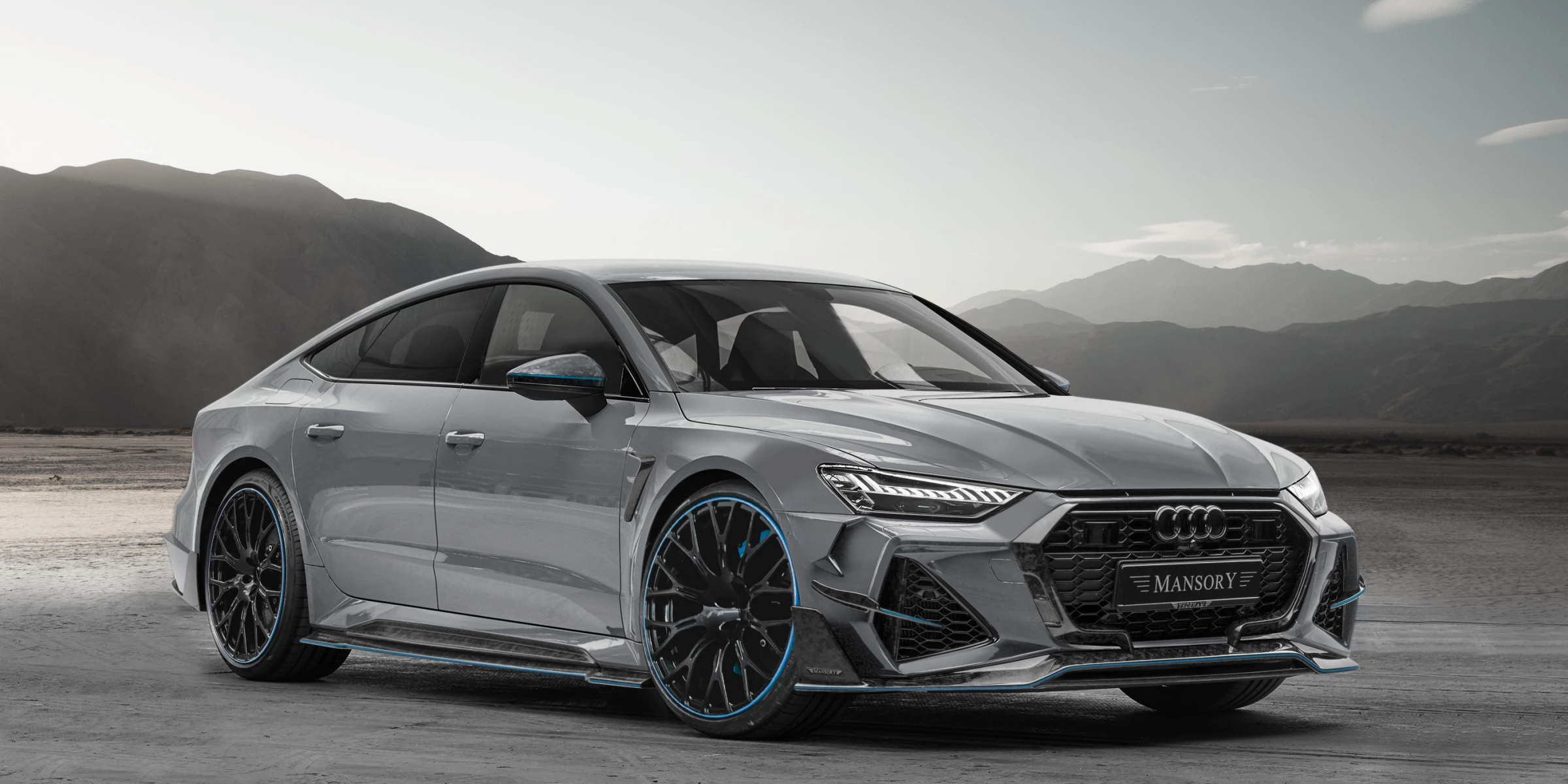
Why is this car important in a top-speed discussion? Because it exemplifies what Audi does best: combining brutal performance with everyday usability and unmistakable design.
You could drive it to a boardroom meeting during the day, then hit nearly 190 mph on a closed track by night. It’s refined when you need it to be and a monster when you want it to be.
For those who want a sedan that feels like it belongs in both a luxury catalog and a motorsport pit lane, the RS7 Performance delivers—quietly, confidently, and at nearly 200 mph.
5. Porsche Panamera Turbo S – 196 mph
The Porsche Panamera Turbo S is the ultimate expression of performance luxury in the sedan space. With a top speed of 196 mph, it is one of the fastest four-door cars Porsche has ever made—and that’s saying something considering the brand’s motorsport heritage.
But unlike many cars in this high-speed segment, the Panamera doesn’t shout about its capabilities. It whispers refinement while moving like a missile.
Under its sculpted hood sits a 4.0-liter twin-turbocharged V8, delivering 620 horsepower and 604 lb-ft of torque. That powerhouse is mated to an 8-speed PDK dual-clutch transmission and Porsche’s all-wheel-drive system, ensuring power is distributed seamlessly and without drama.
The result? A 0–60 mph time of just 2.9 seconds, making it one of the quickest sedans in the world—even faster than some versions of the 911.
But the magic of the Panamera Turbo S isn’t just in its straight-line stats. Porsche has managed to craft a full-size luxury sedan that handles like a sports car.
Thanks to adaptive air suspension, rear-axle steering, active anti-roll bars, and torque vectoring, this large car feels agile, responsive, and incredibly balanced through corners—even at very high speeds. The steering is precise and communicative, a trait many competitors fail to match.
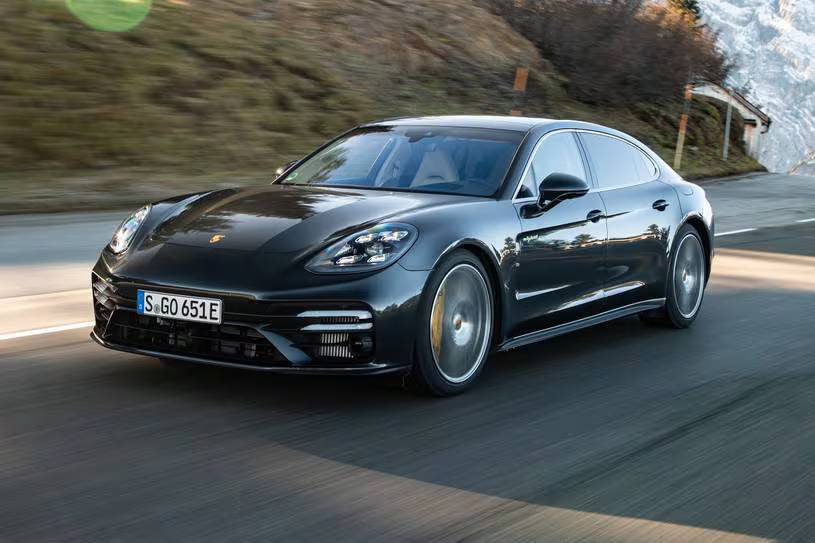
Inside, the cabin is unmistakably Porsche—minimalist but elegant, sporty yet plush. High-quality leather, aluminum, carbon fiber, and piano black accents define the space.
There’s room for four adults in comfort, and the layout is designed to keep the driver at the center of the experience. A large curved display integrates navigation, performance data, and infotainment, while the driving position is low and focused, like in a true sports car.
A key part of the Panamera’s appeal is its dual personality. At one moment, it’s a quiet cruiser on the highway, soaking up bumps with air suspension and isolating road noise like a limousine. At the next, it’s a howling performance machine, rocketing toward 196 mph with composure and ferocity.
The Panamera Turbo S matters in the top-speed conversation because it proves a super sedan doesn’t have to sacrifice luxury or everyday practicality to be brutally fast.
It brings race-bred performance to the executive segment without compromise—refined, relentless, and unmistakably Porsche.
5 Sedans With Governors
While top-speed bragging rights often steal headlines, many sedans on today’s roads are intentionally restricted from reaching their full performance potential.
This isn’t due to lack of engine power or engineering capability, but because of electronic speed governors—software-based limiters programmed by manufacturers to cap a vehicle’s top speed.
This practice, though sometimes frustrating for enthusiasts, is often rooted in safety, regulatory standards, tire ratings, drivetrain limitations, or even corporate philosophy.
Governors typically engage once a vehicle reaches a specific speed—commonly 112 mph (180 km/h) or 130 mph (209 km/h), depending on the make and model.
While most drivers will never attempt to reach such speeds, the existence of these limits has a significant impact on how sedans are marketed and perceived.
In performance circles, governed cars are sometimes criticized for having “untapped potential,” even when they’re still very quick by normal standards.
Manufacturers like Volvo and certain luxury German automakers are leading the trend of voluntarily capping vehicle speeds. Some aim to promote road safety and environmental responsibility, while others want to maintain a uniform policy across regions.
In some cases, a higher speed can be unlocked through performance packages or software changes—but the base versions remain electronically restrained.
In this section, we highlight five sedans that are governed from the factory, often to the dismay of gearheads. These cars may have the mechanical chops to run with high-speed elites, but they’re deliberately held back.
Understanding why manufacturers make this choice adds nuance to how we evaluate performance cars—reminding us that speed is not always about what’s mechanically possible, but also about brand image, legal restrictions, and corporate values.
1. Volvo S60 Recharge T8 – Electronically Limited to 112 mph (180 km/h)
Volvo made headlines in recent years by becoming the first major automaker to voluntarily cap the top speed of all its new cars to 112 mph, and the S60 Recharge T8 plug-in hybrid is no exception.
This bold policy, announced in 2020 and implemented shortly thereafter, was rooted in Volvo’s commitment to its “Vision 2020” initiative: an ambitious plan to reduce traffic fatalities and serious injuries in its vehicles to zero.
As part of this philosophy, Volvo believes speed governance plays a crucial role in promoting responsible driving and reducing accident severity.
The S60 Recharge T8 is a luxury compact sedan with the heart of a performance car. Its plug-in hybrid powertrain pairs a turbocharged and supercharged 2.0-liter four-cylinder engine with an electric motor, producing a combined 455 horsepower and 523 lb-ft of torque—figures that could easily push the car past 140 mph if unrestricted.
The car also sprints from 0 to 60 mph in just 4.3 seconds, placing it in the same acceleration league as entry-level sports sedans.
However, once it hits 112 mph, the S60 Recharge T8 quietly cuts off any further acceleration. The limiter is not removable via a factory option, making this cap a firm boundary regardless of package or trim.

Despite this, Volvo doesn’t position the S60 Recharge as a sports sedan—it’s more of a sophisticated, safe, and sustainable luxury vehicle that just happens to be quick in short bursts.
Inside, the cabin is quintessentially Scandinavian: minimalist, elegant, and packed with high-tech features like a Google-based infotainment system and advanced driver assistance technologies. It’s designed for comfort and serenity, not track days or Autobahn stints.
The S60 Recharge T8 serves as a symbol of Volvo’s rebranding as a tech-forward, ethically conscious automaker.
While enthusiasts might mourn the lost potential of an otherwise potent drivetrain, the governed speed aligns perfectly with the brand’s values—emphasizing safety over top-speed glory.
2. Toyota Camry TRD – Electronically Limited to 133 mph
The Toyota Camry TRD is one of the most surprising entries in the governed-speed conversation—not because it’s extraordinarily fast, but because it’s far more performance-oriented than people expect from a Camry.
This isn’t the quiet, commuter-friendly sedan your parents drove. The TRD (Toyota Racing Development) version of the Camry adds visual aggression, a sportier suspension, and a snarling exhaust note—but despite all that flair, its top speed is electronically limited to just 133 mph.
At the heart of the Camry TRD is a naturally aspirated 3.5-liter V6 engine, delivering 301 horsepower and 267 lb-ft of torque. Power is sent to the front wheels via an 8-speed automatic transmission.
The TRD upgrades include a unique track-tuned suspension with stiffer springs, larger sway bars, a lower ride height, and improved chassis bracing.
This gives the TRD genuine handling benefits over the standard Camry models—making it sharper in corners and more planted at higher speeds.
But no matter how capable the chassis feels, once the speedometer touches 133 mph, the electronic limiter gently steps in.
This limitation isn’t entirely unexpected; the Camry TRD, while tuned for better performance, is still positioned as a family-friendly sport sedan, not a true rival to high-speed German or American sports sedans.
Tire specifications, drivetrain design, and general brand conservatism also contribute to Toyota’s decision to limit the car.
Still, the Camry TRD isn’t about chasing 0–60 or top-speed records—it’s about adding driver engagement to a daily driver.
The exterior styling includes a bold blacked-out grille, aggressive body kit, red brake calipers, and a large rear spoiler that gives it legitimate curb appeal.
Inside, you’ll find sporty red accents, TRD stitching, and supportive seats—subtle touches that make the car feel special without overdoing it.
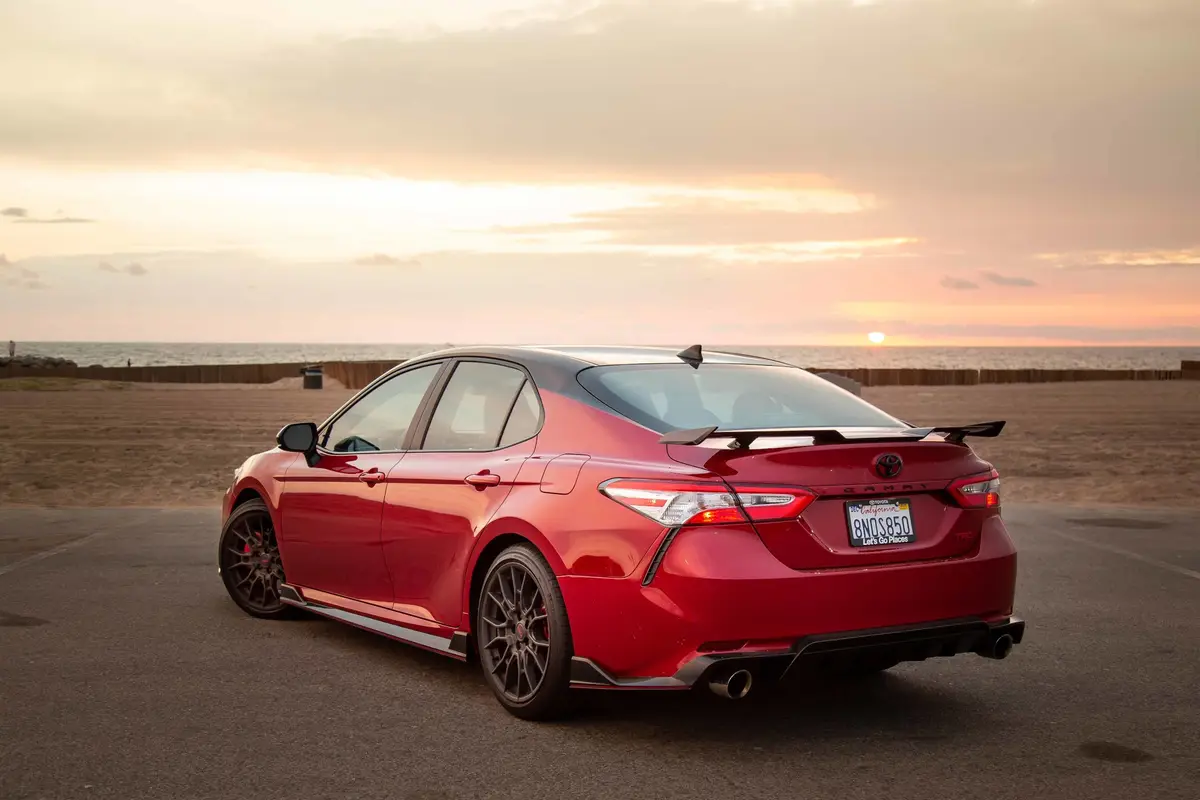
From a brand perspective, Toyota plays it safe—especially with a car like the Camry, which carries a reputation for reliability and mass-market appeal. The TRD variant exists to offer an exciting alternative without compromising Toyota’s core values.
Limiting its top speed ensures it doesn’t step too far into territory reserved for pricier, performance-bred sedans.
In short, the Camry TRD delivers driving excitement without the need for triple-digit autobahn cruising. It’s a sporty sedan meant to be enjoyed at legal speeds—responsible, fun, and uniquely Toyota.
3. Mercedes-Benz E-Class (Base E350) – Electronically Limited to 130 mph
The Mercedes-Benz E-Class E350 is a luxury midsize sedan that prioritizes refinement, comfort, and cutting-edge technology over raw speed—and that’s reflected in its electronically limited top speed of 130 mph.
While the E-Class lineup does include AMG variants that can tear up the autobahn, the base E350 is firmly rooted in the executive luxury category, offering smooth power delivery and understated elegance rather than performance theatrics.
Under the hood, the E350 features a 2.0-liter turbocharged inline-4, producing 255 horsepower and 295 lb-ft of torque. It’s mated to a 9-speed automatic transmission and offered with either rear-wheel drive or Mercedes’ 4MATIC all-wheel-drive system.
Despite its relatively modest engine specs, the E350 accelerates from 0–60 mph in a respectable 6.1 seconds, which is more than enough for confident highway merging and everyday driving.
However, the car is governed at 130 mph, which is typical for luxury sedans in this segment that prioritize safety and efficiency over top-end speed.
Mercedes limits the E350’s speed for several reasons. Firstly, the standard all-season tires aren’t designed for sustained high-speed driving.
Secondly, the base E-Class isn’t aimed at performance seekers—it’s built for quiet, composed travel with a focus on luxury appointments.
Third, limiting the speed helps manage noise, fuel consumption, and mechanical wear, all of which matter to the average E-Class buyer.
Inside, the E350 is a showcase of Mercedes-Benz craftsmanship. It comes with a dual-screen layout for digital instrumentation and infotainment, ambient lighting with 64 colors, soft-touch materials, and available massaging seats.
The emphasis here is on creating a serene driving experience—one that soothes rather than excites.
From a broader perspective, Mercedes uses electronic governors to draw clear lines between its luxury models and its high-performance AMG offerings.
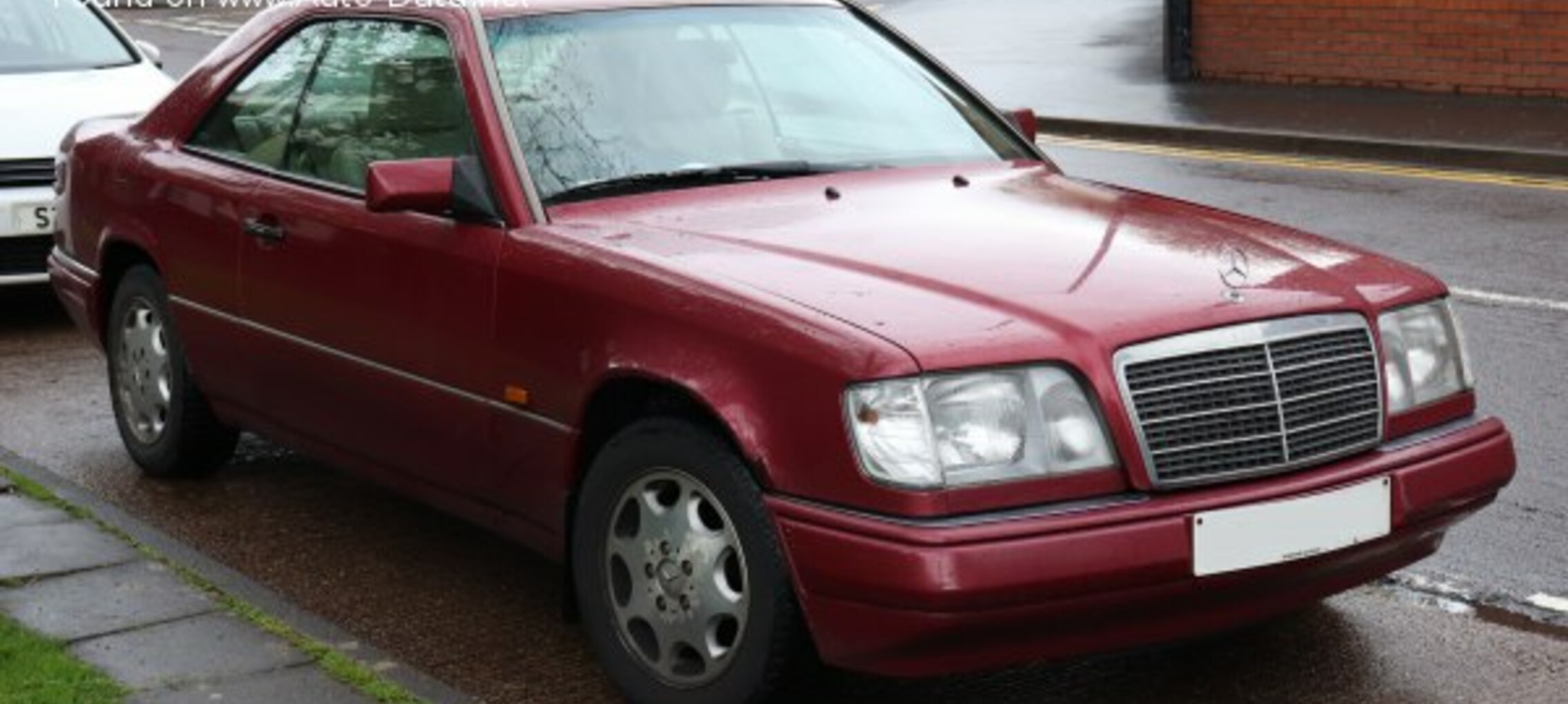
The E63 AMG S, for example, pushes well past 180 mph, but that’s a $100K+ vehicle with special tires, brakes, and tuning. By contrast, the E350’s speed limiter helps maintain product separation while still giving drivers more than enough pace for typical use.
In summary, the E350 is a luxurious, tech-rich sedan that delivers just enough performance to be satisfying, while wisely capping its top speed to align with its real-world purpose: comfort, safety, and elegance—not chasing triple digits on the autobahn.
4. Lexus ES 350 F Sport – Electronically Limited to 131 mph
The Lexus ES 350 F Sport represents a sportier take on one of Lexus’s most popular sedans, yet despite its upgraded suspension, bolder styling, and driver-focused enhancements, it’s still electronically limited to a top speed of 131 mph.
This blend of athletic intention and cautious restraint makes it an intriguing study in dual-purpose design—where luxury and conservative performance intersect.
Powering the ES 350 F Sport is a naturally aspirated 3.5-liter V6, producing 302 horsepower and 267 lb-ft of torque.
Mated to an 8-speed automatic transmission and front-wheel drive, the powertrain provides a smooth and responsive drive, delivering a 0–60 mph time of around 6.1 seconds.
While those numbers suggest mid-tier performance, the 131 mph limiter ensures the ES doesn’t stray into sports sedan territory—a clear sign that Lexus wants this to remain a comfort-focused vehicle at heart.
The F Sport trim enhances the driving dynamics with a sport-tuned suspension, larger 19-inch wheels, and available adaptive dampers. It handles more confidently than the standard ES, with sharper turn-in, reduced body roll, and better road feedback.
Yet, even with these upgrades, Lexus makes a conscious decision to hold the car back at the top end. Why? Because the ES, even in F Sport guise, is fundamentally a luxury commuter designed for smooth highway cruising—not high-speed heroics.
Inside, the ES 350 F Sport maintains Lexus’s reputation for high-quality craftsmanship. The cabin features F Sport-exclusive elements like aluminum trim, bolstered sport seats, a digital instrument cluster, and available red leather upholstery.
It also offers a quiet ride, advanced driver-assistance features, and a focus on user-friendly technology. Lexus’ hallmark here is serenity—with the F Sport adding just a pinch of excitement without disrupting the recipe.
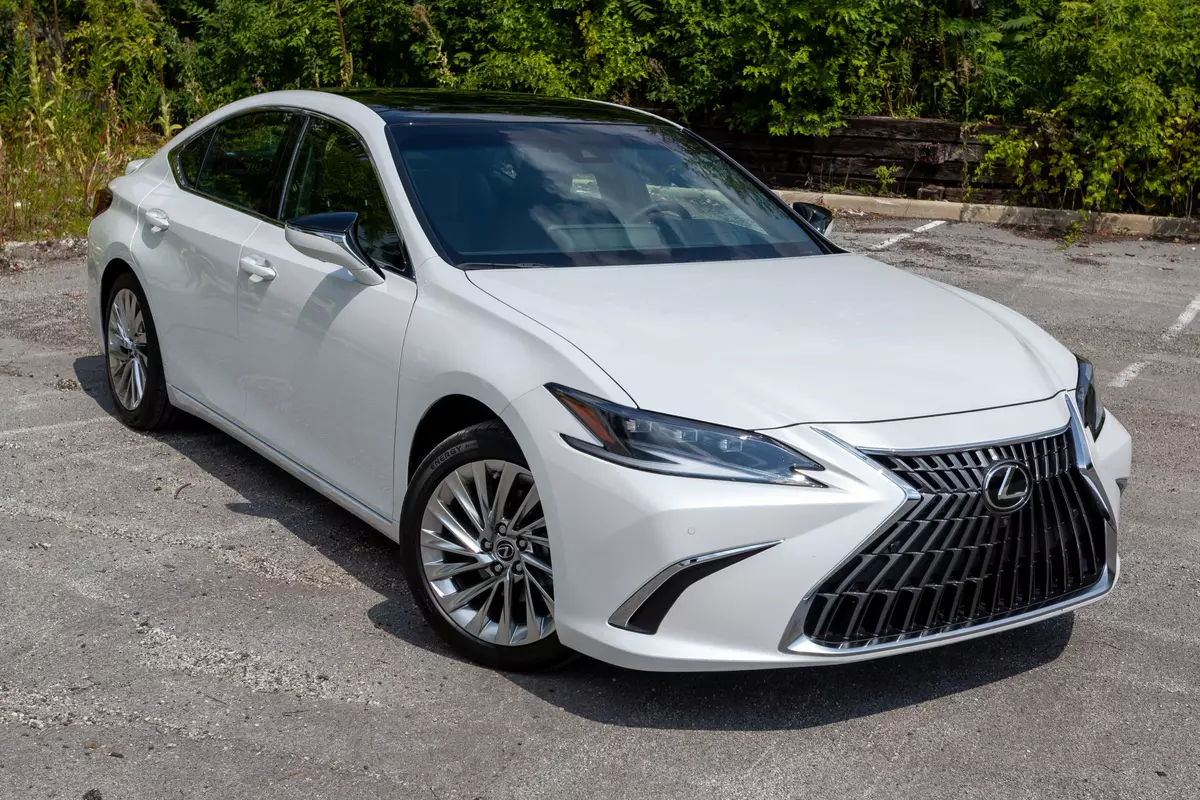
The 131 mph limiter is aligned with Lexus’s brand values: safety, reliability, and refinement. Lexus sedans aren’t trying to compete with the German autobahn burners. Instead, they offer a premium experience that doesn’t encourage risky or unnecessary speed.
The speed cap also keeps tire requirements and maintenance costs more manageable—benefits appreciated by the ES’s core demographic.
In conclusion, the Lexus ES 350 F Sport offers a dash of athleticism within a well-established luxury framework. It looks and feels sportier than the base model, but its electronically governed speed is a reminder that Lexus still favors smooth over savage.
5. Honda Accord 2.0T Sport (10th Gen) – Electronically Limited to 115 mph
The 10th-generation Honda Accord 2.0T Sport is a standout in the midsize sedan segment for its balance of performance, practicality, and value.
Powered by a peppy turbocharged engine and offering a sporty, driver-oriented feel, it’s arguably one of the most engaging family sedans in its class.
But despite its athletic intentions, Honda has electronically limited its top speed to just 115 mph—a clear indication that its priorities lie in real-world usability rather than high-speed ambition.
Under the hood is a 2.0-liter turbocharged inline-4, derived from the Civic Type R, producing 252 horsepower and 273 lb-ft of torque.
Paired with a smooth-shifting 10-speed automatic transmission (or a short-lived 6-speed manual in early years), the Accord 2.0T Sport can sprint from 0–60 mph in about 5.5 seconds—a genuinely quick figure for a front-wheel-drive sedan in this price bracket.
But once it approaches 115 mph, the electronic speed limiter steps in and cuts off additional acceleration.
This governor is primarily in place to maintain alignment with tire specifications, drivetrain longevity, and Honda’s focus on safety and efficiency. Since most U.S. roads have speed limits well below 85 mph, the extra performance beyond 115 mph is seen as unnecessary.
Additionally, the Accord’s role as a family-friendly vehicle means Honda prefers to promote fuel economy, comfort, and daily drivability over autobahn-capable specs.
That said, the 2.0T Sport isn’t just about straight-line performance. With a well-tuned suspension, tighter steering than the base models, and stiffer springs, it delivers a confident and composed ride. It’s agile in corners, communicative through the wheel, and feels much more premium than its price suggests.
The styling also helps—subtle sport touches like dual exhausts, 19-inch wheels, and gloss black trim give it presence without going over the top.
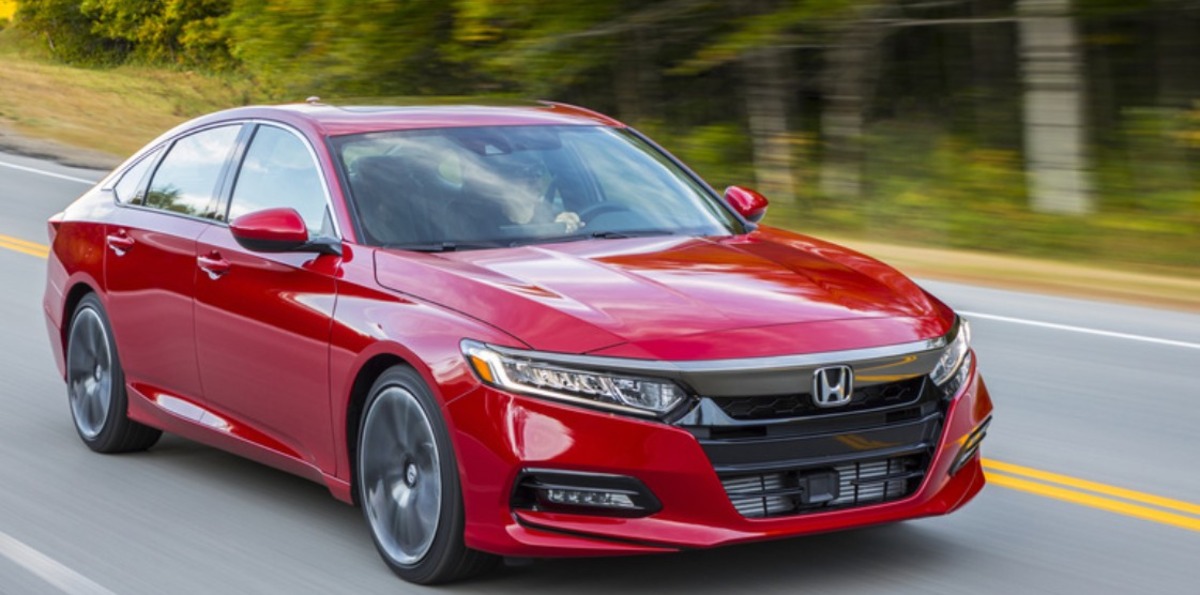
Inside, the Accord 2.0T Sport offers ample space, a clean dashboard layout, and solid materials throughout. It includes an 8-inch touchscreen with Apple CarPlay and Android Auto, a 12-way power driver’s seat, and Honda Sensing safety features as standard. It’s as functional as it is fun.
Ultimately, the 115 mph limiter doesn’t take away from what the Accord 2.0T Sport is meant to be: a quick, refined, and practical sedan that delivers just enough thrills for daily driving—without tempting fate on open roads.
The contrast between sedans with sky-high top speeds and those electronically governed to lower limits offers a fascinating look at the dual philosophies in modern automotive design.
On one end, we have engineering marvels like the Dodge Charger Hellcat Redeye, Tesla Model S Plaid, and Porsche Panamera Turbo S—machines built to challenge sports cars, set track records, and defy what we traditionally expect from a four-door vehicle.
These sedans aren’t just about speed; they’re about pushing the boundaries of what’s technically possible, while still offering luxury and practicality.
Also Read: 5 SUVs With Best Panoramic Roofs And 5 With Small Sunroofs

